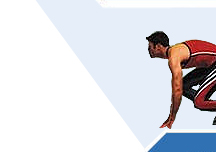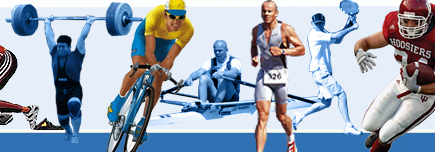PERFORMANCE REHABILITATION SERVICES OFFERED
Chiropractic:
Chiropractic care can enhance your body’s self-healing process and help you maintain good health. Chiropractors specialize in maintaining a harmonious relationship between the joints of the spine and extremities and the nervous system. A Chiropractor may also consider your diet, exercise and other natural methods as a way of promoting health without the use of drugs or surgery.
Each case is different and actual adjustments and treatment will vary from patient to patient. The need of x-rays will be decided here. X-rays help our doctor rule out disease and help in the diagnosis of certain conditions that are not readily visible during a physical exam. X-rays will only be taken if required. Performance Rehabilitation is fully equipped with an X-ray facility, so patients are not required to go to another location for this procedure.
Chiropractic adjustments are gentle, controlled and directed pressure that is applied with the doctor’s hands. The adjustments help to restore a more normal position or motion, most times, relieving pain. Chiropractic care can provide relief from many of today’s most common health problems including headaches, neck and back pain, tension and stress, stiff joints, tendonitis, arthritis, sports related injuries, motor vehicle accidents, spinal trauma, industrial accidents, pain related to pregnancy disc problems and scoliosis.
Massage Therapy:
Massage therapy is the hands on manipulation of the soft tissues of the body which include the muscles, connective tissue (ligaments and tendons) and joints. Massage therapy treats problem specific areas as well as the whole metabolism, by normalizing the circulatory, lymphatic, muscular and nervous system. The effects of massage are cumulative and a course of massage treatments will bring the most benefits. Regular massage can have the effect of strengthening and toning the entire body mechanism, and so help to prevent unnecessary strains and injuries that might otherwise occur due to excess tension and any resulting structural weaknesses. Massage Therapy improves circulation to various tissue and organs. Massage can stimulate or calm the nervous system depending upon what is required by the individual and help reduce fatigue leaving the receiver with a feeling of replenished energy.
Massage therapy assists with increased range of motion, pain free movement, relief from headaches, relief from neck and low back pain, tendonitis, stress reduction and soft tissue injury.
Acupuncture:
Acupuncture is an ancient system of traditional Chinese medicine originating 4000 years ago, but introduced to North America in the 20th century. The underlying theory states that optimum health and freedom from disease is to a large extent dependent upon the harmonious balance within the body of the vital energy flow.
This energy flow is described by the Chinese as Qi, and represents the vital life energy which flows through the body via the system of meridians or channels. There are 12 main meridians on each side of the body and another two in the middle, front and back.
Treatment is done by the insertion of needles or the application of electroacupuncture depending on the patient’s requirements. Acupuncture is very helpful for many conditions either on its own or in conjunction with other treatments such as Chiropractic and Massage Therapy.
Physical Therapy:
Physical therapists provide services that help restore function, improve mobility, relieve pain, and prevent or limit permanent physical disabilities of patients suffering from injuries or disease. They restore, maintain, and promote overall fitness and health. Their patients include accident victims and individuals with disabling conditions such as low-back pain, arthritis, heart disease, fractures, head injuries, and cerebral palsy.
Therapists examine patients’ medical histories and then test and measure the patients’ strength, range of motion, balance and coordination, posture, muscle performance, respiration, and motor function. They also determine patients’ ability to be independent and reintegrate into the community or workplace after injury or illness. Next, physical therapists develop plans describing a treatment strategy, its purpose, and its anticipated outcome. Physical therapist assistants, under the direction and supervision of a physical therapist, may be involved in implementing treatment plans with patients.
Treatment includes exercise for patients who have been immobilized and lack flexibility, strength, or endurance. Physical therapists encourage patients to use their own muscles to increase their flexibility and range of motion before finally advancing to other exercises that improve strength, balance, coordination, and endurance. The goal is to improve how an individual functions at work and at home.
|















